- Home
- Oyster Sailboats
Oyster Yachts: A Legacy of Bluewater Cruising and Craftsmanship
For many sailors, the name Oyster conjures images of robust, comfortable, and capable yachts designed for serious offshore passage-making and circumnavigation. This British builder of Oyster Yachts has carved out a distinct niche in the luxury cruising market, prioritizing safety, seaworthiness, and an onboard experience that truly feels like a home away from home.
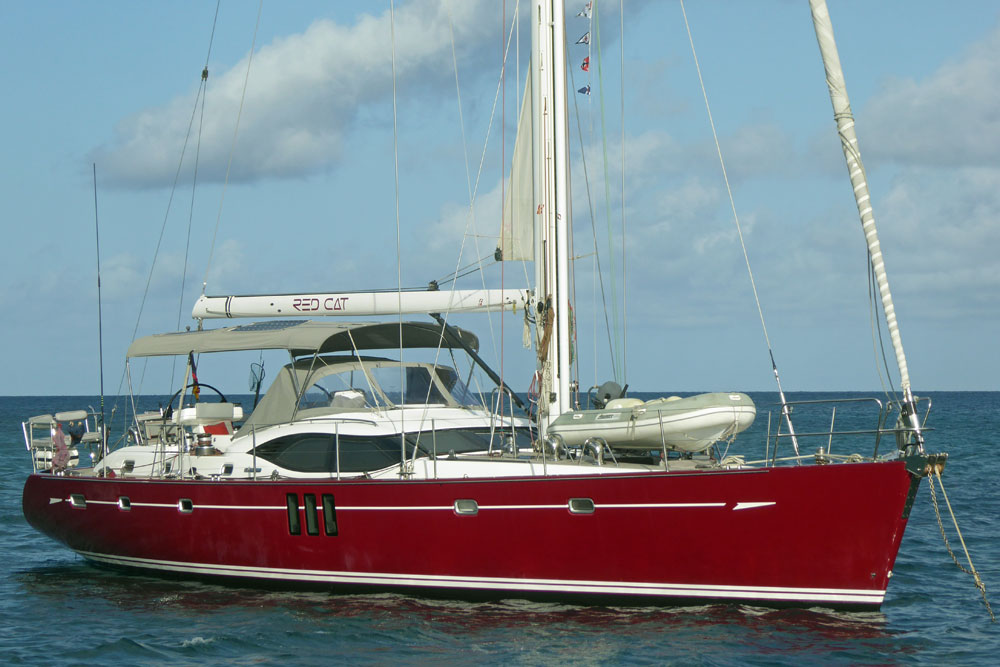 Oyster 625
Oyster 625Table of Contents
- The Genesis of a Bluewater Dream
- Crafting a Bluewater Performer: Design & Construction
- The Evolution of a Fleet: Iconic Models & Modern Offerings
- The Sailing Experience: Performance & Comfort
- The Oyster Legacy & Ownership Experience
- A Balanced View: Challenges & Considerations
- Remarkable Journeys & Influential Figures
- Summary: The Oyster Identity
But what lies beneath the gleaming hull and bespoke interiors of an Oyster? Let's delve into the story of a brand that has become synonymous with global adventure.
The Genesis of a Bluewater Dream
When and where was Oyster Yachts founded, and by whom?
Oyster Yachts, originally known as Oyster Marine, was founded in 1973 by Richard Matthews. The company's roots are in Norfolk, England, with strong ties to Wroxham and Ipswich, though its current headquarters are in Southampton. Matthews' initial vision was to create a different breed of yacht, one that could blend competitive racing performance with genuine cruising comfort.
The foundational idea stemmed from the 32-foot prototype, UFO II, designed by British naval architects Holman and Pye. This vessel proved its mettle on the race course, winning the Royal Yacht Squadron's de Maas Cup in 1974. This success paved the way for the UFO 34, and shortly thereafter, the Oyster Heritage 37 emerged in 1984. Thirty-two of these elegant Holman and Pye designs were launched, with Yachting World noting it was "closer to my ideal cruising yacht than any other boat on the market." The Oyster 39, built between 1978 and 1984, also became a notable early model, known for its spacious center cockpit layout and comfortable accommodation, often configured as a ketch.
A pivotal moment in Oyster's design philosophy arrived in 1978 with a 46-foot cruising ketch, also by Holman & Pye, which introduced the now-iconic deck saloon feature. This innovation, providing panoramic views from the saloon, would become a hallmark of Oyster yachts, defining their interior ambience and setting them apart from many competitors.
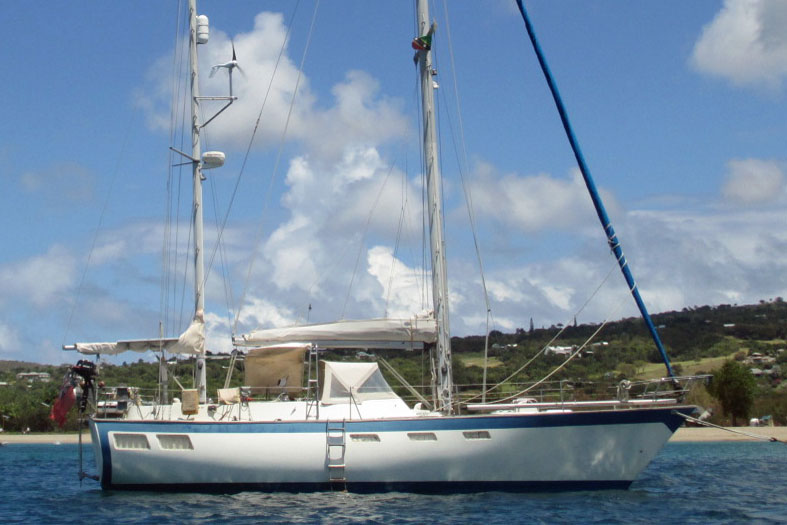 Oyster 39
Oyster 39What have been the key milestones and ownership changes for Oyster Yachts?
Oyster's journey has seen periods of significant growth, innovation, and even challenges. The company steadily increased the size of its vessels, launching larger and more sophisticated designs. A significant partnership began in 1999 with naval architect Rob Humphreys, who would go on to design over 20 Oyster models, including some of their most iconic. This collaboration has been instrumental in shaping the modern Oyster aesthetic and performance.
In terms of ownership, Oyster was sold to private equity firm Balmoral Capital in 2008, then to Dutch firm HTP Investments BV in 2012. A significant setback occurred in February 2018 when the boat-building arm of Oyster Marine went into administration. This followed a high-profile incident in 2015 involving the sinking of an Oyster 825, "Polina Star III," attributed to a manufacturing process issue with the internal hull structure. However, the brand found a new lease of life just over a month later when British tech entrepreneur Richard Hadida acquired Oyster Yachts in its entirety. Hadida, an Oyster owner himself, set about re-employing many former staff and revitalizing the company, demonstrating a strong commitment to the brand's legacy.
What is Oyster's overarching design philosophy?
Oyster's design philosophy, refined over 50 years, centers on creating yachts of uncompromising strength, quality, and exhilarating performance, driven by a passion for extended bluewater cruising in luxury, comfort, and safety. Their mission has always been to build high-quality yachts with supreme standards of build and craftsmanship, designed to take owners anywhere in the world. This is not merely about constructing boats, but about enabling adventure and a unique lifestyle. The deck saloon, a signature feature, allows for excellent visibility and natural light, contributing to the "home-from-home" feel that Oyster owners cherish.
Crafting a Bluewater Performer: Design & Construction
Who are the notable designers associated with Oyster Yachts?
From its earliest days with Holman & Pye, Oyster has collaborated with leading naval architects. The most prominent and enduring design relationship has been with Rob Humphreys of Humphreys Yacht Design. Humphreys has been responsible for the lines of a vast number of Oyster models, including contemporary classics like the Oyster 53 and Oyster 62, and more recent award-winning designs such as the Oyster 495, 565, and 595. This long-standing partnership ensures a consistent design evolution while maintaining the core Oyster DNA.
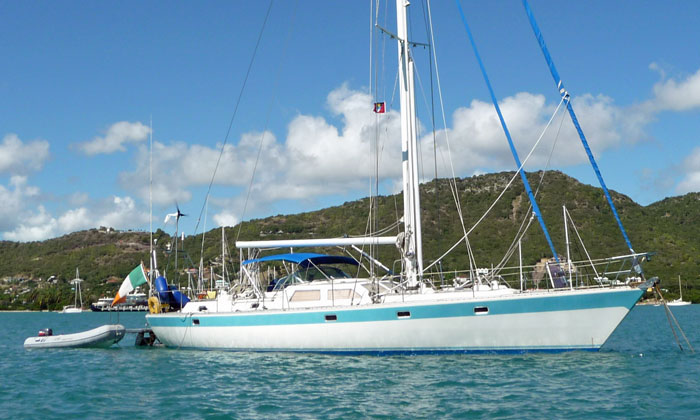 Oyster 53 (Holman & Pye version)
Oyster 53 (Holman & Pye version)What are the signature design features of an Oyster sailboat?
Beyond the distinctive deck saloon, several features define an Oyster:
- Robust Hulls: Oysters are known for their strong hull forms, often featuring plumb bows and a fuller aft section in newer models, which contributes to increased interior volume and enhanced form stability.
- Center Cockpit Configuration: Many Oyster models, particularly those aimed at serious cruising, feature a well-protected center cockpit. This design places the cockpit further amidships, offering a drier ride, greater security in rough seas, and often allowing for a spacious aft owner's cabin. The Oyster 45, the last Oyster designed by Holman and Pye, exemplifies this with its classic three-cabin layout and secure center cockpit.
- Keel-Stepped Masts: This construction method, where the mast extends through the deck to the keel, effectively transfers rig forces to the strongest part of the boat, enhancing structural integrity.
- Generous Stowage: Recognizing the needs of long-term cruisers, Oysters typically offer abundant storage both on deck and below, including large lazarettes.
- High-Quality Interior Joinery: Exquisite hand-crafted interiors using carefully selected hardwoods are a hallmark of Oyster, contributing to their luxurious and comfortable living spaces.
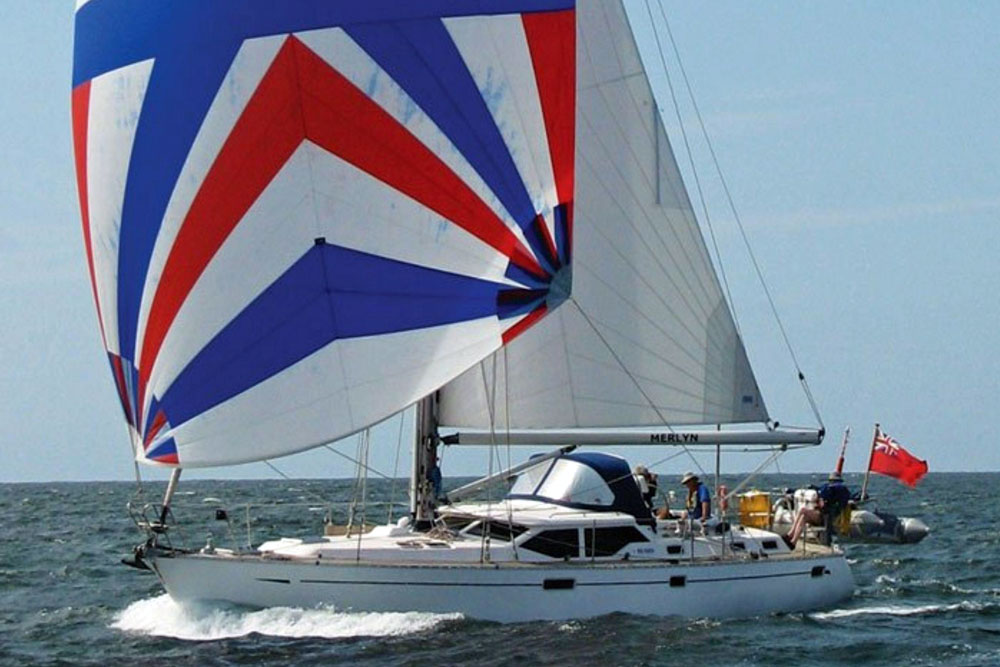 Oyster 45
Oyster 45What construction methods and materials does Oyster employ?
Oyster's reputation for build quality is a cornerstone of the brand. Their hulls and decks are manufactured from "Oyster custom" laminate, utilizing carefully specified unidirectional, bi-axial, tri-axial, and quadri-axial fabrics. Above the waterline, a cored structure provides strength, stiffness, and insulation, while below the waterline, the hull features a monolithic (single-skin) composite laminate forward of the aft keel bulkhead, reinforced with stringers and floors. Aft of the keel, the hull area typically features a cored structure. This composite construction aims for an optimal balance of strength, stiffness, and reduced weight.
The company employs NPG resin gel coat for its excellent UV resistance and waterproofing. Deck hardware is made from high-grade A4 stainless steel for corrosion resistance, and load-bearing items are often over-specified for bluewater durability. Interiors feature hardwoods selected from sustainable sources, with meticulous attention to grain matching and finishing. Oyster has also moved towards bringing more of the production in-house, including hull moulding in partnership with Lloyds Register, further emphasizing control over quality.
The Evolution of a Fleet: Iconic Models & Modern Offerings
What are some of Oyster's foundational and iconic models?
The UFO 34 was the company's first production yacht, demonstrating their early commitment to performance and durability. However, the introduction of the deck saloon on the Oyster 46 and subsequent models truly set the brand apart. Over the years, models like the Oyster 82 gained considerable recognition as luxury bluewater cruisers, offering extensive accommodation and high-performance sailing.
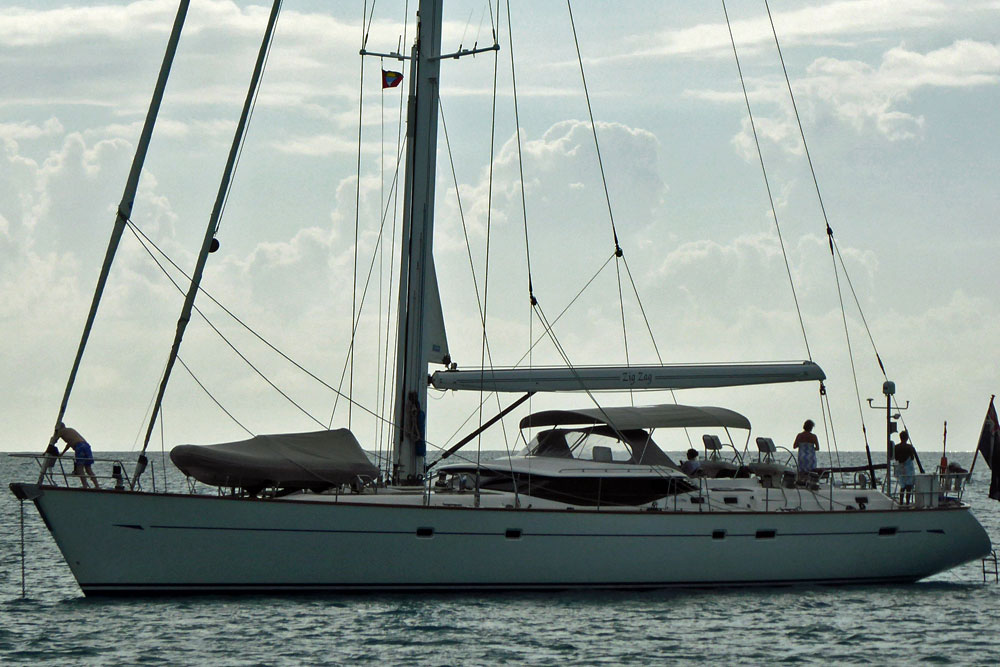 Oyster 82
Oyster 82The Oyster 53, launched in 1999, quickly became one of Oyster Marine's most successful designs, with over fifty hulls built. It was the smallest Oyster to offer a four-cabin arrangement, making it highly versatile for extended cruising. Owners frequently report consistent 200-mile days at sea, a testament to its powerful cutter rig and robust hull. Similarly, the Oyster 62, introduced in 2002, is noted for its excellent performance under sail, capable of averaging 200 miles a day, and has achieved class wins in events like the ARC (Atlantic Rally for Cruisers).
More recently, the Humphreys-designed "G6" hulls, starting with the Oyster 53, brought a sleeker, more modern appearance with wider aft beams, enhancing both space and performance. The Oyster 575, an evolution of the highly successful Oyster 56, was designed to be easily sailed short-handed by an experienced couple while providing increased accommodation, comfort, and performance. The Oyster 625, launched in 2012, further exemplifies this with its customized layouts, often featuring crown-cut oak interiors and automated rigs for ease of management.
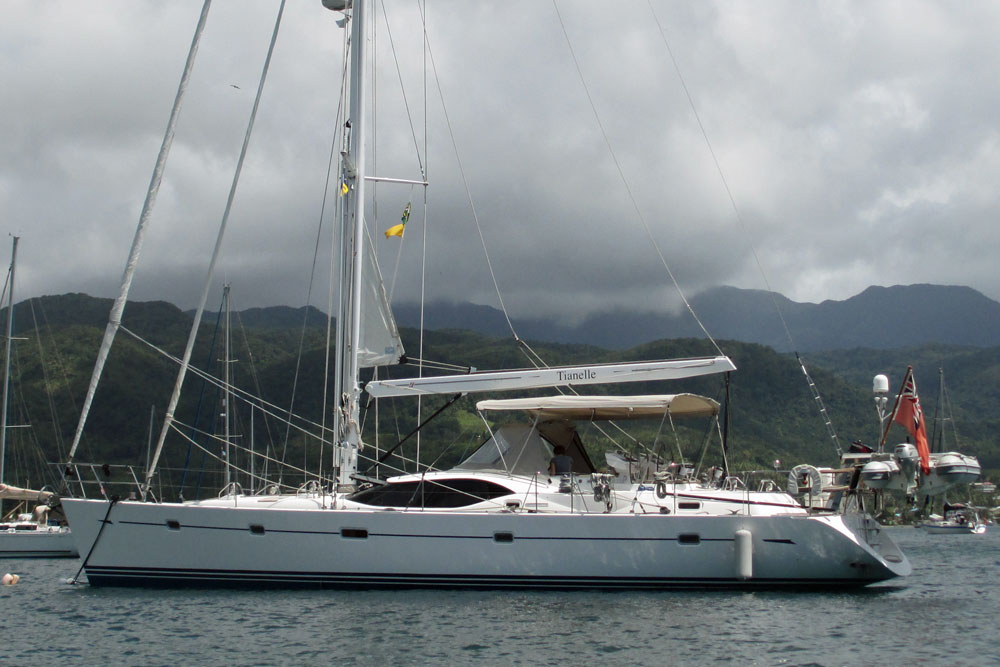 Oyster 575
Oyster 575What are the current production offerings from Oyster Yachts?
Today, Oyster offers a range of luxury bluewater cruisers, typically from 50 to 90 feet, all designed for serious offshore sailing and liveaboard comfort. Current models include:
- Oyster 495 (winner of European Yacht of the Year)
- Oyster 565 / 565SII
- Oyster 595 / 595SII
- Oyster 675
- Oyster 745
- Oyster 805
- Oyster 885 / 885SII
These yachts are handcrafted and built to order in Britain, maintaining the brand's commitment to bespoke quality.
The Sailing Experience: Performance & Comfort
How do Oyster yachts generally perform at sea, and what is their offshore capability?
Oyster yachts are designed primarily for comfortable, safe, and efficient bluewater cruising. They are known for their stability and seakindliness, making them suitable for long passages and varied ocean conditions. While not out-and-out racing machines, many Oysters are capable of good passage speeds, often described by owners as "cruising fast." The larger diameter rigging and high stability-to-ballast ratio contribute to their robust offshore capability. Modern designs, like the Oyster 495, incorporate plumb bows and wider aft sections to resist heeling and enhance performance, while twin rudders improve control. Push-button hydraulic furling systems for both mainsail and headsails are common, enabling effortless short-handed sailing.
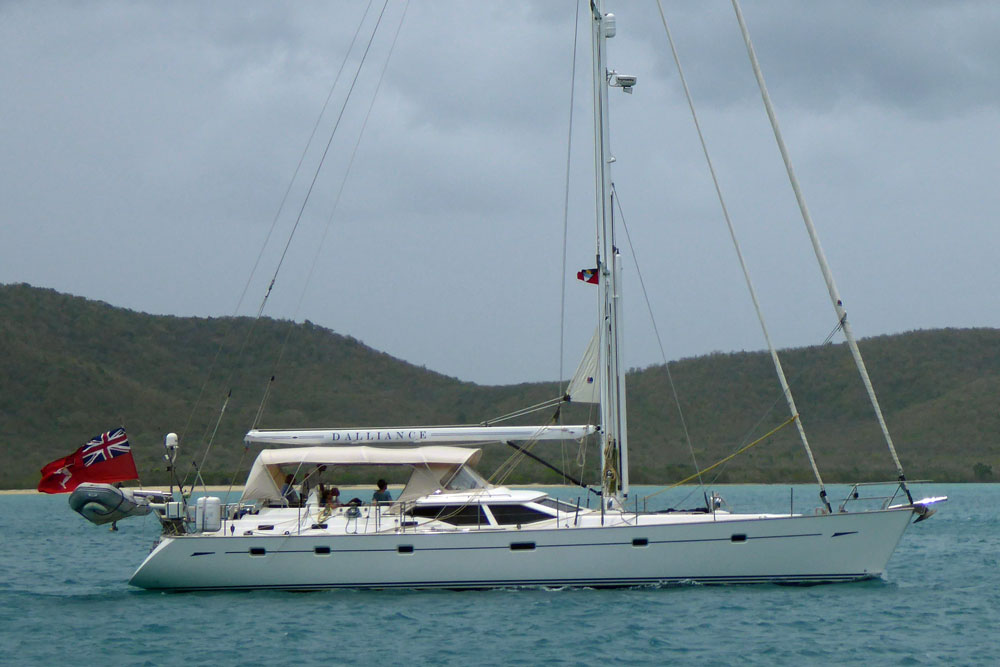 Oyster 62
Oyster 62How is the interior layout and comfort prioritized in Oyster yachts?
Oyster interiors are renowned for their luxurious comfort and thoughtful layouts, designed to facilitate long-term liveaboard cruising. The signature deck saloon is a key element, providing abundant natural light and panoramic views, which greatly enhances the living experience below deck. Interiors often feature hand-built joinery in a variety of hardwoods, creating an elegant and inviting atmosphere.
What makes Oyster yachts suitable for liveaboard or long-term cruising?
Several factors contribute to Oyster's suitability for liveaboard and extended cruising:
- Spacious and Well-Appointed Interiors: Generous volume, particularly in newer models with wider beams, allows for comfortable living spaces, ample headroom, and often multiple cabin configurations. The Oyster 625 for instance, often features highly customized layouts to maximize guest space and comfort.
- Large Tankage and Stowage: Oysters are provisioned with significant fuel and water tankage, along with extensive storage throughout the vessel, crucial for self-sufficiency on long voyages.
- Protected Cockpits: The center cockpit design offers a secure and sheltered environment, particularly valuable in challenging weather, and often includes features like integrated refrigeration and comfortable seating.
- Accessible Technical Spaces: Oyster designs prioritize accessibility to systems and machinery for maintenance and repairs, a vital consideration for remote cruising.
- Integrated Systems: Modern Oysters are increasingly digitally enabled with integrated systems for entertainment, lighting, and core boat functions, providing a "home-from-home" experience even in remote locations.
The Oyster Legacy & Ownership Experience
What is the typical customer profile for an Oyster yacht?
Oyster owners are often experienced recreational sailors who value safety, comfort, and the ability to undertake significant voyages, including circumnavigations. They appreciate the high build quality, customisation options, and the peace of mind that comes with owning a yacht capable of taking them anywhere in the world. Many are drawn to the "Oyster family" ethos, participating in events like the Oyster World Rally.
What is Oyster's brand reputation and resale value?
Oyster maintains a strong reputation as a premium brand in the luxury cruising yacht market. Despite the challenges faced in 2018, the brand has largely rebounded under new ownership. Oysters are known for their enduring quality, which often translates into strong resale values. The company's brokerage service actively assists owners in buying and selling pre-owned Oysters, and well-maintained examples tend to retain their value, particularly those with desirable specifications or those that have participated in events like the Oyster World Rally.
Are there active online communities or owner groups for Oyster yachts?
Yes, Oyster fosters a strong sense of community among its owners. The company organizes exclusive events, regattas (such as in Antigua and Palma), and most notably, the Oyster World Rally. This fully supported circumnavigation provides an unparalleled experience for owners to sail the world together. These initiatives naturally lead to active owner groups and online communities where experiences, advice, and camaraderie are shared.
A Balanced View: Challenges & Considerations
What are some of the limitations or known issues associated with Oyster yachts?
While highly regarded, it's important to consider a balanced perspective. The incident involving the Oyster 825 "Polina Star III" in 2015 highlighted a critical, albeit isolated, manufacturing issue related to hull lamination. While Oyster has addressed this and reinforced its commitment to quality control, it served as a stark reminder of the complexities of yacht construction.
What are the cost of ownership factors for an Oyster yacht?
Oyster yachts are a significant investment, and the cost of ownership extends well beyond the initial purchase price. As with any large yacht, factors include:
- Mooring and Berthing Fees: These can be substantial, especially in desirable locations.
- Maintenance and Servicing: High-quality yachts require high-quality maintenance, including regular engine checks, rig inspections, and GRP upkeep. Oyster offers extensive after-sales support and service centers globally, which can be a valuable resource but also an ongoing expense.
- Insurance: Premiums will reflect the yacht's value and intended use.
- Haul-out and Yard Periods: For antifouling, surveys, and larger maintenance tasks.
- Upgrades and Refits: Over time, systems and aesthetics may require updating.
- Depreciation: While Oysters generally hold their value well compared to some other brands, all yachts depreciate over time.
Owners should budget a percentage of the boat's value annually for these ongoing costs.
Remarkable Journeys & Influential Figures
Are there notable individuals or memorable voyages associated with the Oyster brand?
Beyond Richard Matthews' founding vision and Rob Humphreys' influential designs, the current owner Richard Hadida's personal passion for the brand and commitment to its resurgence is a significant narrative. Hadida himself is an Oyster owner and has sailed extensively, including undertaking a circumnavigation on his Oyster 885, "Lush." His personal investment underscores the spirit of adventure that Oysters are built for.
The Oyster World Rally is perhaps the most significant ongoing "voyage" associated with the brand. This event sees multiple Oyster yachts embark on a multi-year, fully supported circumnavigation, showcasing the yachts' capabilities and fostering an unparalleled sense of community among participants. These rallies have generated countless memorable journeys and cemented Oyster's reputation as a true world-cruising platform.
Summary: The Oyster Identity
Oyster Yachts stands as a formidable name in the world of bluewater sailing. From its humble beginnings in Norfolk, England, the company has consistently pursued a vision of building robust, comfortable, and capable cruising yachts. The signature deck saloon, the strong construction methods, and the enduring collaboration with Rob Humphreys have defined the Oyster aesthetic and performance. While the brand has faced challenges, particularly a difficult period in 2018, its revival under Richard Hadida has underscored the deep loyalty and passion associated with these yachts.
Oysters are not about cutting-edge racing performance, but rather about delivering a secure, luxurious, and supremely capable platform for exploring the world's oceans. They cater to a discerning owner who values quality craftsmanship, thoughtful design, and the ability to sail long distances in comfort and safety. The active owner community and the allure of events like the Oyster World Rally further enhance the ownership experience, transforming a yacht purchase into an entry into a global family of adventurers. For those dreaming of distant horizons and a true home on the water, an Oyster continues to represent a highly compelling proposition.
Resources & References
Recent Articles
-
Hans Christian 43: Classic Bluewater Cruiser & Liveaboard Sailboat
Dec 10, 25 04:37 AM
Explore the Hans Christian 43: a legendary heavy-displacement, long-keel sailboat. Read our in-depth review of its specs, design ratios, and suitability for offshore cruising and living aboard. -
Planning Your Sailboat Liveaboard Lifestyle: An Ocean Sailor's Guide
Dec 06, 25 05:18 AM
Seasoned sailors share their methodical risk analysis for planning a secure Sailboat Liveaboard Lifestyle, covering financial, property, and relationship risks. -
Marine Cabin Heaters: The Expert’s Guide to Comfort & Safety at Sea
Dec 05, 25 06:52 AM
Choose the best Marine Cabin Heaters for your vessel. Expert advice on diesel, paraffin, and hot water systems for year-round cruising comfort.












